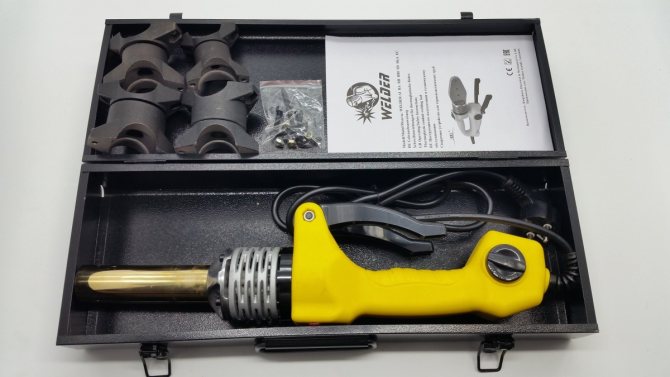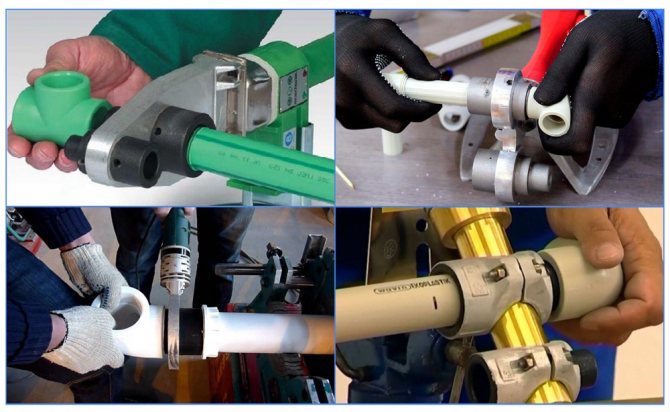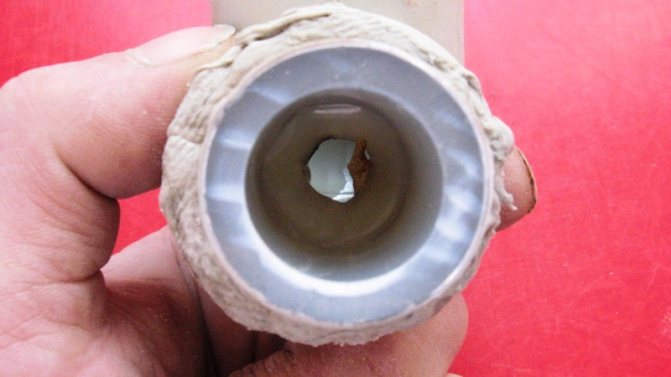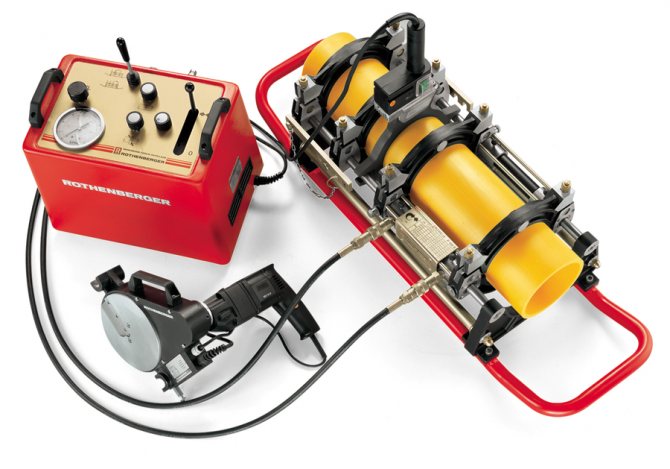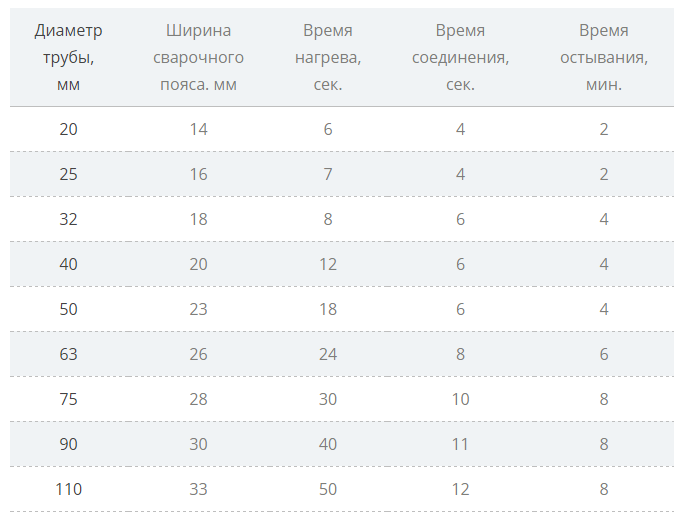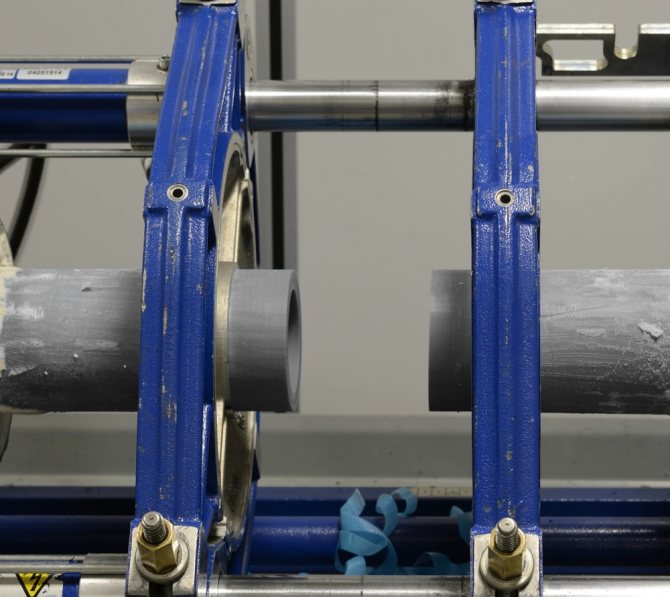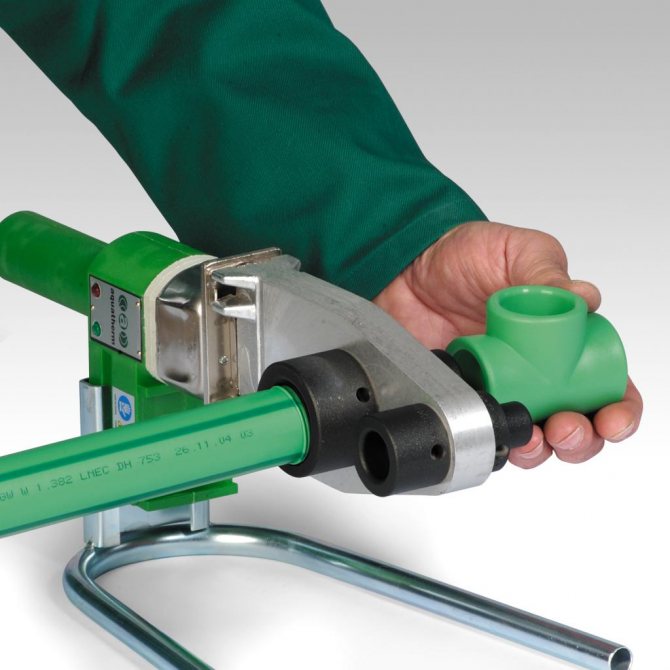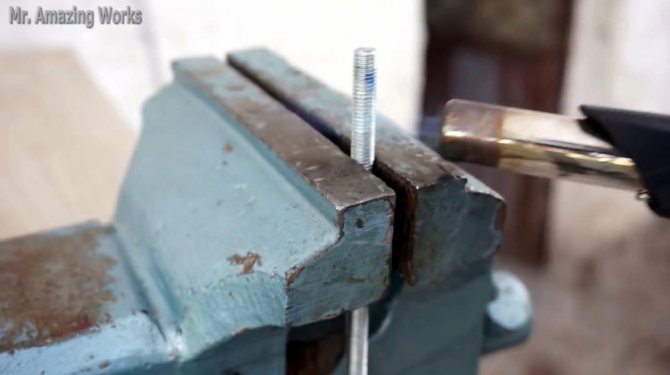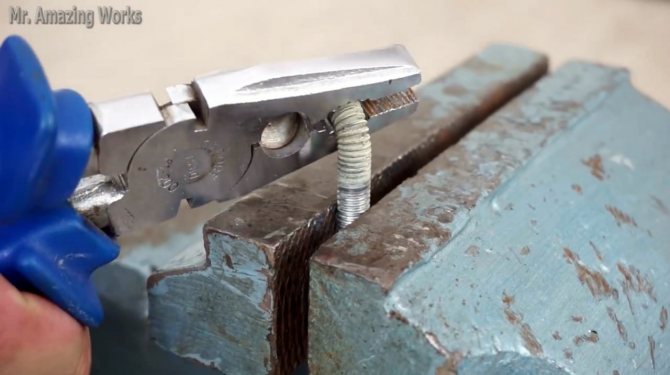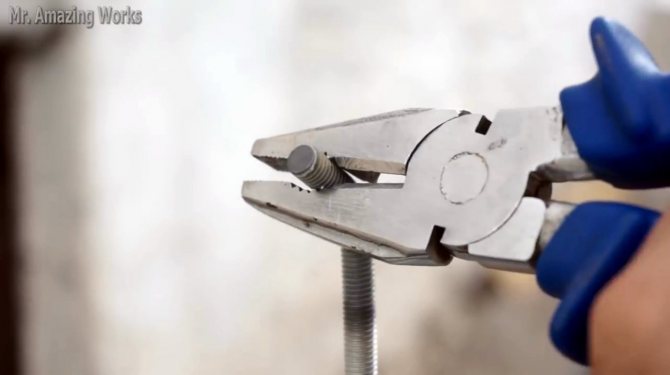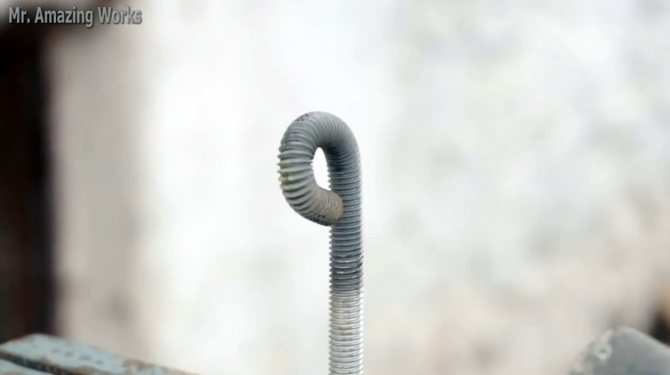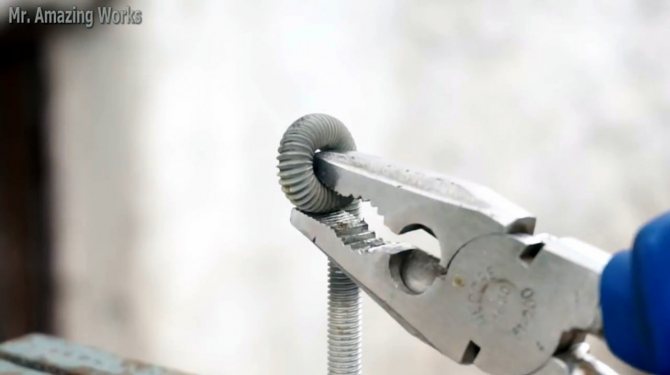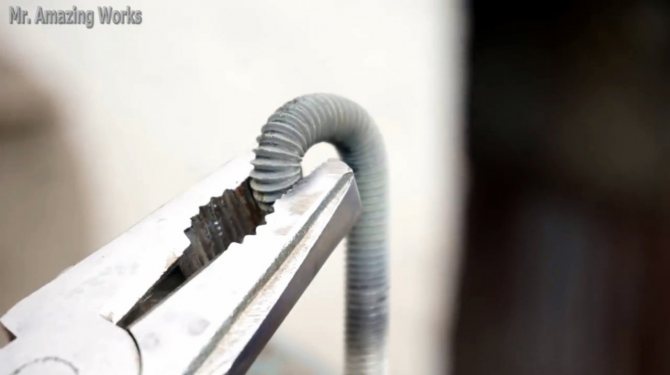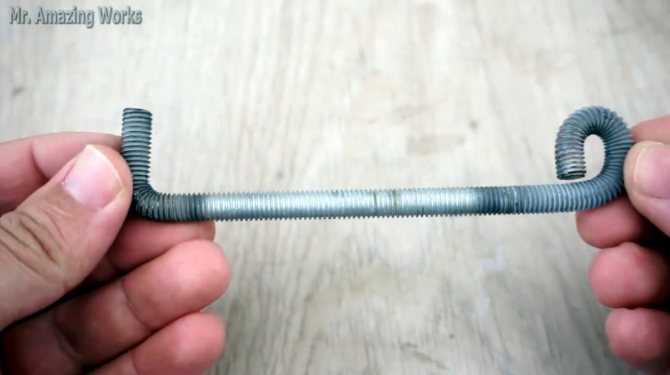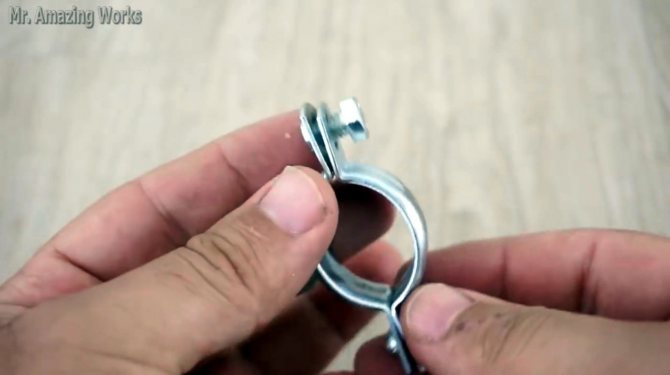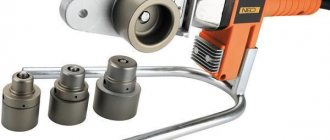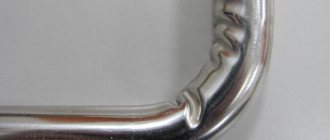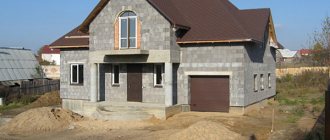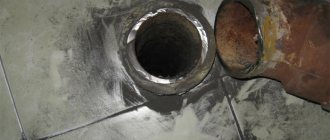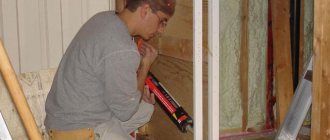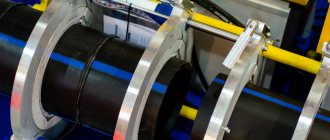For high-quality installation of water supply or heating, first of all, you need to choose a tool for soldering polypropylene pipes. The use of cast iron pipes for these purposes with the use of threaded connections is a thing of the past, and the use of polypropylene pipes comes to replace, which are connected by soldering. This is done using a special soldering iron with nozzles. This tool has gained popularity not only among specialists, but, being quite affordable, and among home craftsmen who are used to doing everything on their own.
Characteristics and equipment of soldering irons
The soldering iron for propylene pipes is similar in design and principle of operation to an ordinary iron, it differs only in shape and purpose.
The main parts are a thermostat and a powerful heating element, as well as an ergonomic handle, stand and replaceable nozzles for different pipe diameters.
The pmoregulator ensures that a certain temperature is maintained, since overheated or subcooled polypropylene will not provide a high-quality connection during the soldering process. Another purpose of the thermostat is to protect the heating element from overheating. According to its design, the heating element can be of two types - round (nozzles are strung on it) and flat in the form of an iron sole with holes for attaching nozzles. The second option is more popular.
Nozzles for different pipe diameters are included in the kit, and their number may be different for different sets, here it is already up to you to choose. They can be purchased separately if required. The attachments have a special coating that prevents PP from sticking. Some kits also contain special shears for cutting propylene pipes. This is a necessary tool for installation, so if your kit does not include them, then you must definitely purchase them. As a rule, a soldering iron is sold in a convenient metal case for transporting and storing all its parts.
This tool is designed to operate on a 220 volt mains supply. The heating rate depends on the power of the soldering iron. To work with pipes with a diameter of 16 to 63 mm, it is enough to have a soldering iron with a power of 850 watts, and if you are going to work with diameters up to 125 mm, then you will need a tool with a power of up to 1500 watts. The optimum temperature for brazing propylene pipes is set by the thermostat knob to + 260 ° C. When this value is reached, the thermostat will stop further heating, which will be signaled by a light on the case.
1pokanalizacii.ru
Equipment
To weld pipes with their own hands, beginners will need:
- Pipe cutter. Allows you to cut items to size. When doing work with your own hands, use scissors for cutting, a hacksaw with a fine tooth. They do not allow you to form a straight cut and often deform the cut element. To obtain a smooth cut and maintain geometry, a circular pipe cutter for plastic pipes is used.
- Trimmer. Forms a chamfer of the cut. Removes burrs. Prevents delamination of the walls of products reinforced with metal foil. The inner foil layer is removed to a length of up to 2 mm.
- Measuring tools and pencil. Instead of a pencil, a special marker is used to leave a clearly visible mark on the surface of polypropylene pipes.
- Alcohol wipes. They help to degrease and dust off the welding area.
- Welding machine with replaceable socket head. At the initial stage, a device with a capacity of up to 1 kW is sufficient. It will allow you to weld products with a diameter of up to 63 mm. Professional models have a lot of power. At the same time, two pairs of sockets of different diameters are heated.
In our catalog you will find all the models of welding units that are included in the rating of pipe welding machines as the most efficient models.
Soldering tools
In order to connect the separate parts of the water supply system to each other, it is necessary to use technologies of temperature exposure. Soldering or welding of plastic pipes allows diffusion of plastic molecules, resulting in a strong and tight connection.

Photo - apparatus for soldering plastic communications
These works are carried out using special devices - a welding inverter for plastic pipes or a gun:
- The welder is considered a more professional apparatus and is mainly used by experienced plumbers. Its price is an order of magnitude higher than a standard household pistol;
- The gun is a kind of soldering iron that can point-wise act on individual parts of plastic or metal-plastic communications.
Welding machines can be classified by power. Now the most popular are universal models for 1500-1600 watts. They are convenient for household use, in addition, the kit also includes a set of nozzles for working with various types of pipelines.
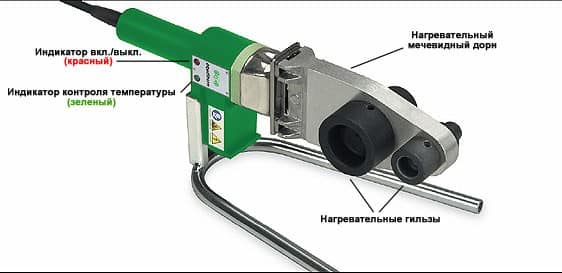

Photo - soldering iron design
It should be noted that in addition to special devices, additional tools will also be needed. In particular, these are scissors for cutting plumbing parts. And also a roller pipe cutter, which allows you to provide the most even and smooth cut on the surface of communications.
Also, when working with metal-plastic or foil-reinforced pipes, you will need a cleaning tool - a grinder. It evens out the cut edge, which often leaves small irregularities after cutting the desired area. If you ignore this process, then the connection may not be strong and tight enough, which will affect the operation of the entire sewer system.
If you need to solder pipes made of plastic with a large diameter - from 110 mm, then an electric coupling is used. It is pushed onto the joint and heats the joint. In the process, the centering of individual sections of communications plays the main role, since it is almost impossible to control the process during welding. To work with such a device, a special centering machine is used, which allows you to level the cut surface in order to obtain the most dense seam. The power of the couplings is somewhat different from the power of welding machines and soldering guns, in most cases slightly higher values are required - over 1500 watts.
Cold soldering is also often used at home. The technology involves the use of an aggressive adhesive, which ensures the diffusion of plastic molecules without the use of heating elements. The main advantage of this method is its simplicity. Such welding can be easily performed even without experience, in addition, the purchase of additional devices is not required. But at the same time, such a soldering is considered short-lived, that is, it is more urgent measures than an option for permanently connecting pipes.
Photo - an example of cold soldering of plastic communications
You can buy a tool for soldering plastic pipes in almost any plumbing store, on average it costs from 800 rubles to several tens of thousands. For example, in Sevastopol, the cost of WESTER DWM 1000B varies from 1800 rubles to 2000. The price depends on the declared power of the device, brand and its purpose.
Video: how to properly solder plastic pipes
Xiphoid apparatus
Such inexpensive devices are designed to work in a domestic environment. They weld polypropylene pipes up to 40 mm in diameter. The appearance of the heating plates in many models is very similar to that of a household iron. The plates of the heating element have holes in which replaceable nozzles are installed.


When welding for polypropylene pipes, positive reviews refer to the PRORAB 6405-K model. It is distinguished by sufficient reliability and relatively low cost. Perfect for homework. This apparatus consists of a heating plate, a thermostat and a handle. The set of a soldering iron for welding polypropylene pipes may also include additional equipment: a cutter, a device for chamfering, a device for removing reinforcement.
Soldering instructions
Self-welding of plastic pipelines is carried out using a sewage project and in accordance with GOSTs. For each material, soldering is performed in accordance with a certain temperature, the table below will help you choose the right values:
| Diameter, mm | Heating, seconds | Welding, seconds | Cooling, seconds |
| 16 | 6 | 4 | 3 |
| 20 | 6 | 4 | 4 |
| 25 | 7 | 4 | 4 |
| 32 | 9 | 4 | 4 |
| 40 | 12 | 5 | 4 |
| 50 | 17 | 5 | 5 |
| 63 | 23 | 5 | 5 |
| 75 | 30 | 7 | 7 |
| 90 | 38 | 7 | 8 |
| 110 | 48 | 9 | 10 |
| 160 | 80 | 14 | 14 |
Step-by-step instructions on how to solder plastic pipes of heating systems or connect a plumbing:
- You need to install special nozzles on the welding device, for example, fittings for pipes of 25 mm. Using the table, the time of their heating is determined, the temperature according to the standards is at around 260 degrees. This is the optimal parameter for soldering conventional plastic and reinforced pipes;
- After that, other plumbing tools are prepared. Be sure to check that the cutter is sharpened before cutting. For small diameters, the cut is recommended not at a right angle, but at 45 degrees; Photo - soldering kit
- Now you need to measure the size of the fitting on the pipe and take into account a gap of 1 mm. It must be present when joining. Mark it on communications. This is very important, since the fitting cannot be pushed in all the way, after heating the plastic will expand slightly;
- A fitting must be put on the preheated nozzle, then a pipe must be inserted into another hole of the connecting part. Further, the gun heats up and the nozzle heats up again along the entire length; Photo - heating elements
- It remains to carefully remove the heated parts and connect them. The result will be a strong and sealed mount with a fitting;
- The next stage of pipe soldering includes reheating the soldering iron, but only now a piece with a fitting is put on the nozzle, and the free part of the communication is inserted into another hole;
- After heating, the operation is repeated: the parts are removed from the nozzle and connected.
When the work is finished, you need to wait for the specified time to cool the connection, some masters also use a hairdryer to speed up the process.
Photo - hair dryer for plastic
Sometimes the heating iron cannot be used and the use of electric couplings is required. Their principle of operation is very similar to that described above, the main difference is that for such pipe brazing, the entire apparatus is heated completely, and not its individual nozzles.
Before starting welding, it is imperative to degrease the sections, as well as clean them of dust and dirt. To do this, wipe the fitting and sleeve with alcohol on the inside and the pipe on the outside. Soldering is done in the same way as mentioned earlier.
Plumber's recommendations:
- Do not apply too much pressure when connecting the pipe to the fitting. After soldering, the plastic becomes more pliable, due to which, with excessive pressure, wrinkles may appear inside the pipe;
- Do not allow the fitting to run freely on the pipe;
- Pay close attention to heating time and temperature. If you exceed or, conversely, reduce these indicators, then the mount will turn out to be fragile;
- When working at home with water or sewage pipes, leave a gap of no more than 1 mm at the attachment point, otherwise there will be leaks in this area.
www.kanalizaciya-stroy.ru
How should you work
- First of all, you need to draw up a work plan (preferably on paper), choose places for laying pipes. This activity will reduce unnecessary steps and cumbersome welding on the go. You must admit that it is much better and easier to assemble the tubes at the workplace and mount them into the system in a few simple movements.
- In order to connect polypropylene pipes, it requires heating the edges of the parts to be joined. The elements are put on the nozzle, you should hold them on the nozzle for a couple of seconds. The pipes are heated from the outside, the inner part of the element is heated in the sleeve.
- After heating the elements, try to assemble them into the correct structure as soon as possible. If adjustment is required, a few seconds is all you can count on. Most often, work is done by eye. It is not recommended to twist the elements.
- Do not keep polypropylene in the soldering iron for very long. A high-quality connection is obtained only by heating to the correct temperature. Polypropylene may leak from overheating, the tightness will be broken.
Make sure you turn on the tap on the coupling before brazing the PP pipes!
- If you've done everything correctly, a small amount of plastic will come out and float onto the sleeve. If difficulties arise when dressing, bends of plastic, you should remove the chamfer.
German regulations DVS-2207-1 provide for a pipe angle of fifteen degrees and a recess of two to three millimeters. In the Russian Federation, according to the standards - an angle of forty-five degrees and a deepening of one third of the thickness. Accordingly, if the chamfer is even, then it can be within the specified limits.
- For proper safety, the welding device must be placed on a special stand. Do not forget to set the correct temperature at two hundred and sixty degrees Celsius (to speed up the process, you can set it to two hundred and eighty degrees). Temperatures lower and higher will result in poor quality connections. When buying a soldering machine, choose a model with a thermostat.
- Pipes and other elements are put on the nozzle with little effort due to the rather impressive radius. You can twist them a little to make it easier to put on the attachment. At the same time, you should not put pipes on the nozzle to the very end, so as not to melt the ends. Use a marker to know the correct depth.
- It is possible to cook by weight only after assembling all the main elements.
Simple polypropylene pipes cannot function under pressure; they should be used for cold water supply systems. And under pressure - reinforced polypropylene tubes. Before welding, you will have to remove small parts of the reinforcement with a shaver.
Do not place plastic pipes too close to the heating boiler. For this, a metal pipe with a length of more than half a meter is used.
The device and principle of operation of the tool for welding polypropylene
Today, many domestic and foreign companies are engaged in the production of equipment for connecting plastic pipes, which are trying to make it as convenient and efficient as possible. For this, the soldering irons are equipped with additional functions, their appearance, the location of the handles and the methods of attachment of the nozzles change. However, the main elements and nodes remain the same (Fig. 1):
- thermostat;
- heating element (heating element);
- body with a handle;
- nozzles.
According to the principle of operation, the machine for welding polypropylene pipes resembles an ordinary iron. First, the heating element heats the stove. It gives off its heat to the nozzles, which heat the plastic to a certain temperature, thereby achieving the required viscosity.The whole process is monitored by a thermostat, with the help of which the heating temperature is maintained within the specified limits.
The reliability of the polypropylene connection directly depends on the stability of the thermostat. Usually inexpensive soldering irons are equipped with low-quality thermostats. This leads to the fact that during the welding process, the plastic overheats or underheats. As a result, you get a bad connection. Therefore, you should not save on buying a soldering iron. When choosing a tool for soldering polypropylene, it is necessary to give preference to equipment with smooth temperature control and accurate calibration.
Equipment for connecting pipes by welding
Any machine for welding polypropylene pipes has a working surface that heats up from the action of an electric current. The device can be equipped with one or more heating elements that heat various nozzles. It is these devices of different diameters that allow you to work with different pipes with one device. At home, this equipment is called an iron for welding polypropylene pipes.
As a rule, the machines have four sets of welding nozzles in a set, which allow you to connect almost any pipe used in domestic systems. Nozzles for welding polypropylene pipes are coated with Teflon spraying, which eliminates the possibility of plastic sticking to them during heating. Independent production of these devices is impossible due to the complexity of the spraying process.
How to choose an iron for welding polypropylene pipes
When buying a tool for soldering polypropylene, special attention should be paid to the following characteristics:
- power;
- a set of nozzles;
- complete set;
- manufacturer.
Power is the main technical characteristic of the soldering iron, on which the maximum diameter of the connected elements depends, as well as the time of their heating, and, accordingly, the speed of welding. However, it should be borne in mind that when buying a tool, you do not need to chase power, since with its increase, the price of equipment also increases.
When choosing a device for soldering polypropylene pipes in terms of power, it is necessary to multiply the diameter of the connected elements by 10.
As a result, you will get the value of the minimum power of the tool. For example, if, when designing a heating system, you need to connect pipes with a cross section of 40 mm, then in this case you need to purchase a soldering iron with a capacity of at least 0.4 kW. To carry out repair work in your apartment or private house, an iron power of 0.7 kW will be enough. If you plan to use a soldering iron for professional purposes, when the pipe diameter can reach 100 mm, it is recommended to buy a device with a power of up to 2 kW.
A set of attachments. High-quality nozzles for brazing polypropylene pipes must meet the following conditions:
- have good heat dissipation;
- have high mechanical strength;
- maintain their size when the temperature drops.
Almost all modern equipment for pipe welding has the ability to use several nozzles of different diameters at the same time. This allows you to significantly reduce the time for installation work, since there is no need to wait until the nozzle has cooled down to replace it.
Structurally, all nozzles consist of 2 parts: for external (sleeve) and internal (mandrel) heating of polypropylene (Fig. 2). Any alloy that meets all the requirements presented above can be used as a material of manufacture. In the manufacture of attachments to increase their strength and durability, various coatings are used. Most often it is Teflon, which also has a non-stick property, so that the heated plastic will not stick to the attachments.
A set for welding polypropylene pipes can have the following configuration:
- Complete. Perfect for a professional welder. The package includes a welding machine, a wrench for nozzles, a full set of nozzles and additional tools that facilitate installation work (cutter, tape measure, etc.).
- Average. It includes a welding machine, a wrench and commonly used nozzles (20, 25, 32 and 40 mm). If you need other nozzles for pipe welding, they can be purchased separately.
- The minimum. Only a soldering iron for welding and a wrench for nozzles are included. Such a set has a relatively low price and is perfect if you need to solder pipes of the same diameter.
Manufacturing firm. On the plumbing equipment market, there are soldering irons for soldering polypropylene pipes from various manufacturers. Among them, the first place in terms of build quality and usability is occupied by Czech and German tools. It should be noted that it is quite expensive, so it is recommended to buy it only for professional work.
Turkish and domestic models of soldering irons are cheaper than their German and Czech counterparts, but their technical characteristics are somewhat worse. For private use, such equipment is best suited. Chinese-made soldering irons are the most affordable, but low cost often translates into a short service life.
If you need a soldering iron for a single repair, then Chinese models are the best option.
Common mistakes when welding polypropylene pipes
When installing polypropylene water pipes, novice plumbers at home sometimes make some mistakes that negatively affect the quality of welding:
- The presence of dirt and water residues on the surfaces to be welded. An experienced craftsman will never forget to clean the surfaces to be welded, since even a slight contamination or the presence of a small amount of water leads to serious disturbances in the quality of the joint;
- Incorrect positioning. When connecting heated elements, the novice master has very little time for the correct mutual installation of the elements; after this short period, a change in the relative position of the pipe and socket leads to a weakening of the connection;
- Inconsistency of materials. Poor connection can be caused by poor quality pipes and fittings. In this case, even an experienced installer is unlikely to be able to guarantee a quality connection. But there is another option: when trying to combine two high-quality elements from different manufacturers. Some difference in the chemical composition of polymers from different manufacturers can hinder the formation of a high-quality weld.
In conclusion, it can be noted that welding polypropylene pipes with your own hands, subject to technological norms and rules, is quite capable of ensuring a high-quality connection of water supply elements.
Brazing technology for polypropylene pipes
Soldering plastic pipes is quite simple. The main thing is to observe the temperature regime and the heating time of the material. First, the soldering iron is installed on a table or other reliable base, after which a nozzle of the required section is attached to it with a key. Then the required temperature is set on the device, to which it warms up for about 10 minutes.
After that, the ends of the pipes to be connected and the connecting element (angle, coupling, MPH, MPV) are placed on the nozzle. After a few seconds (the holding time depends on the power of the soldering iron and the diameter of the pipes), the plastic products are removed from the nozzles and connected to each other.
There is nothing difficult in choosing a soldering iron for soldering polypropylene. The main thing is to know for what purpose you need it.And if, when using the tool, you follow all the rules of its operation, then you can be sure that such equipment will last beyond the warranty period.
expertsvarki.ru
Soldering temperature
It is necessary that the welding temperature of polypropylene pipes be about 260 ° C. Typically, any soldering iron (with or without temperature control) can provide this value.
The quality of the welded seams of polypropylene pipes is influenced by the choice of the optimal temperature regime and the holding time of the material under heating. If these parameters are below the required value, then the joint is not strong enough, over time it can leak. When the heating time and temperature are too high, the material melts a lot, the seam turns out to be too large and ugly. In addition, getting inside can significantly reduce the diameter.
The temperature around the welding machine should also be taken into account, if it is low, it is necessary to increase the holding time by 2 seconds, if it is high, on the contrary, decrease it. Adhering to these simple rules, welding polypropylene pipes with your own hands will be easy.
The pipe diameter is also of great importance. The table describes the required parameters at + 20 ° C how to properly weld polypropylene pipes.
| Outside diameter of pipes, mm | Heating time, s |
| 16 | 5 |
| 20 | 5 |
| 25 | 7 |
| 32 | 8 |
| 40 | 12 |
| 50 | 18 |
| 63 | 20 |
| 75 | 30 |
| 90 | 40 |
| 110 | 50 |


Large diameter polypropylene pipe butt welding machine
Specificity of brazing polypropylene pipes
The soldering process is carried out due to the pronounced thermoplastic properties of the material. Polypropylene softens when heated - it acquires a state similar to plasticine.
General description of technology
Returning the material to a normal temperature background contributes to the hardening of its structure to a normal state. These properties have become the main technology of soldering, which in technical language is called polyfusion welding.
In practice, two methods of joining the parts to be welded are used:
- Coupling.
- Straight.
The first welding technique shows how you can solder polypropylene pipes using a shaped piece - a sleeve or a pipe with a larger outer diameter. Usually, in this way, plastic pipes are soldered, the diameter of which does not exceed 63 mm.
The principle of welding two parts, in this case, is based on melting a part of the pipe along the outer circumference and part of the coupling along the inner region. Then both parts fit tightly.
The second method - direct contact, is based on the same principle of melting small sections of plastic pipes with their subsequent joining. But in this version, two pipes of the same diameters act as butting elements, and they are joined by their end surfaces. This, at first glance, uncomplicated method of soldering polypropylene requires high precision processing of the joint areas and accurate installation of two parts along the axes during their soldering.
Along with the indicated "hot" technologies, the technique of "cold" soldering is also practiced. Here, as an active soldering component, a special solvent is used that can soften the structure of polypropylene. However, this technique does not differ with a high level of popularity.
Soldering machines for pipe welding
Both the coupling and the direct technique require the plastic pipes to be soldered with special welding machines. Structurally, the soldering technique is something like an electric iron. The basis of the devices is a massive metal heating element, on the surface of which removable nozzles are installed - metal blanks of different diameters.
For butt welding, the designs of soldering machines are of increased complexity. Usually, such equipment includes not only a heating element, but also a system for centering the parts to be welded.As a rule, direct welding equipment, like the technology itself, is rarely used in the domestic sphere. The priority of use here is the industrial sector.
In addition to soldering irons, the master will also need:
- scissors for polypropylene (pipe cutter);
- construction tape;
- locksmith's square;
- shaver (for pipes with reinforcement);
- marker (pencil);
- surface degreaser.
Since work is carried out on high-temperature equipment, it is imperative to wear tight work gloves on your hands.
Polypropylene welding procedure
Important warning! Welding work on polymeric materials should be carried out in conditions of good ventilation of the room. When polymers are heated and melted, toxic substances are released, which in a certain concentration have a serious effect on human health.
The first step is to prepare for work:
- Install blanks of the required diameter on the heater plate.
- Set the temperature regulator of the soldering iron to 260 ° C.
- Prepare the mating parts (mark, chamfer, degrease).
- Switch on the soldering station.
- Wait until the operating temperature is reached (the green indicator turns on).
Simultaneously push the mating parts (pipe - coupling) onto the blanks of the soldering station. In this case, the polypropylene pipe is pushed into the inner area of one ingot, and the sleeve (or socket of the shaped part) onto the outer surface of another ingot.
Usually, the ends of the pipe are inserted along the border of the previously marked line, and the sleeve is pushed on until it stops. When holding polypropylene parts on heated blanks, one should remember an important nuance of the technology - the holding time.
If the time delay is insufficient, there is a risk of obtaining a low degree of diffusion of the material, which will affect the quality of the junction. If the melting time is too much, this leads to deformation of the structure of the part and also does not guarantee high-quality soldering. It is recommended to use the table, which indicates the optimal time value for pipes with different technical parameters.
Soldering time table for polypropylene pipes
After holding the parts on the blanks for an optimal period of time, they are removed and quickly joined by the heated parts. The joining procedure must be performed accurately, quickly (in terms of time in the table), while observing the alignment of the parts to be soldered. It is allowed to make minor adjustments along the axes (within 1-2 seconds), but it is unacceptable to rotate the parts, one relative to the other.
It should be noted: the indicated time for soldering any polypropylene pipes can be adjusted depending on the conditions of work and the parameters of the material. For example, if the installation is carried out at subzero ambient temperatures, naturally the specified rates increase to 50% of the nominal. For each separately taken non-standard conditions, the heating time is selected by the test soldering method.
How to properly solder polypropylene pipes
Polypropylene material has pronounced thermoplastic properties. Therefore, PP products become plastic when heated. As the temperature rises, their structure softens. In this state, polypropylene resembles plasticine.
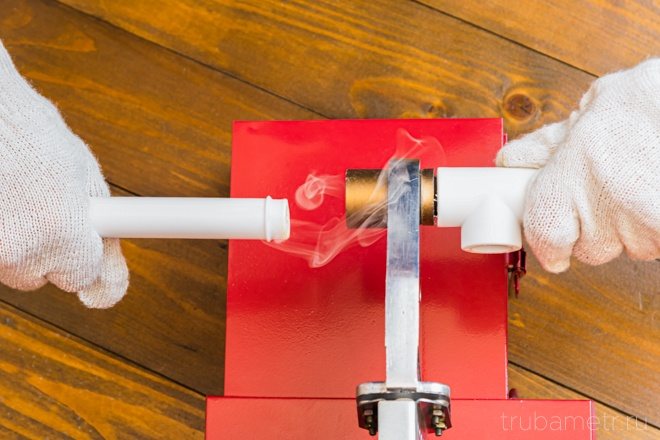

Soldering
Heating and cooling the material allows you to get a reliable joint. The connection is fast. When it is executed slowly, the connection quality deteriorates.
Soldering a polypropylene pipe - polyfusion welding. Therefore, it is carried out using a special soldering iron. The tool allows you to quickly heat the material to the desired temperature. Typically, it is between 300 and 320 ° C. However, polypropylene begins to melt already at 149 ° C.
It is not recommended to heat PP pipes in excess of permissible norms and to act on them with an overheated tool. As a result of such actions, the material will lose its properties and the product will bend easily.
Description of welding technology
In practice, two methods are used to connect tubular polypropylene products: the coupling and butt method.
The principle of soldering technology for polypropylene pipes is simple, because it allows you to perform high-quality welding with minimal skills. The contractor will need to spend a little effort and money to achieve the result.
Beginners often use the coupling method of connection, which requires less skill. It is based on the use of shaped parts. This is a straight piece of pipe or coupling.
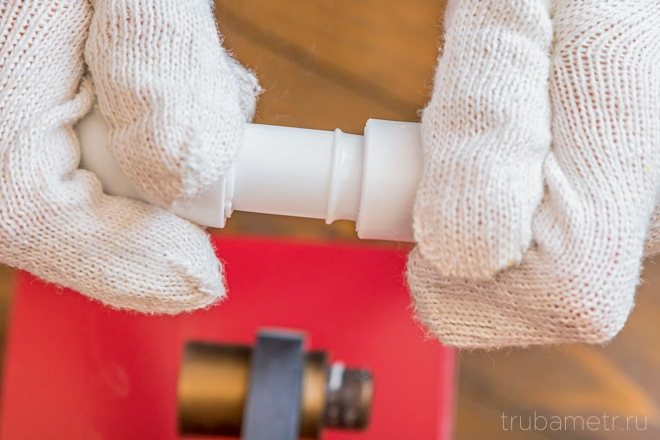

Coupling soldering
The connecting elements are larger in diameter than the main pipeline. Rectilinear communication elements are inserted into them from both sides to a certain depth, depending on the diameter.
At home, this particular docking option is used. It connects pipelines with a diameter of up to 63 mm.
The principle of the clutch method is to melt part of the outer surface of the workpiece. Also, the inner area of the connecting piece. After heating, the two elements are tightly connected.
The butt method is a direct option for connecting system parts. It is also realized due to the melting of the PP elements, but only in this case the ends of the same large diameter are heated. This method does not involve the use of fittings.
During welding of polypropylene pipes of large diameter, deviations from the axis of the connected elements are not allowed. Even a small shift leads to a decrease in the internal section of the system in this area.


Butt welding
This causes a slowdown in the movement of fluid in communication. For accurate joining of parts, in addition to the heating tool, a centering system is additionally used.
Welding machines
Structurally, all machines for socket welding of polypropylene pipes are similar to electric irons. The devices have heating elements and replaceable nozzles of different diameters. Such a tool is usually called a welding iron.


Soldering iron type "iron"
More sophisticated welding machines are used for end-joining. Direct connection equipment is used in industrial facilities.
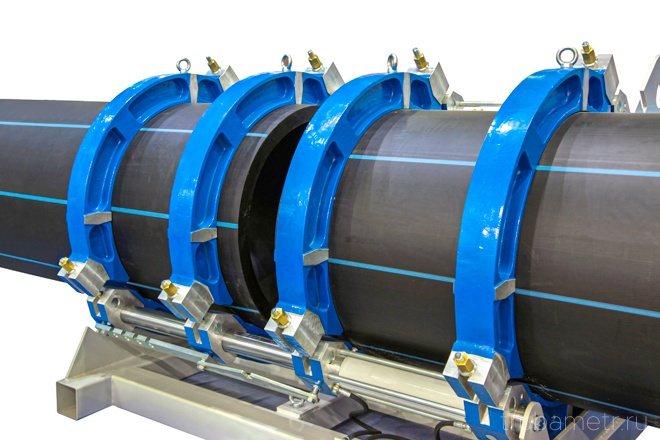

Butt welding machine
When working with any type of heating tool, gloves made of dense fabric must be worn.
Welding process
To reduce the likelihood of error, all operations must be carried out accurately, accurately and exceptionally consistently.
Soldering polypropylene pipes instruction:
- Efficient ventilation is ensured or checked in the room, since toxic substances are released during the soldering of polymer materials. Therefore, it is necessary to create effective air circulation in order to protect the body from high concentrations of harmful elements.
- The edges of the cut workpieces are processed using a facing tool or a special chamfering tool to simplify the process of joining parts.
- The surfaces to be joined are cleaned from dust and degreased using white spirit, which must dry completely naturally. Droplets of water are not allowed, because when the temperature rises, steam is formed, which will cause the appearance of pores in the material. They will degrade the quality of the joint.
- The recommended soldering temperature is set on the soldering iron and the device is turned on. Heating is carried out up to + 260 ° C regardless of the diameter. Only the heating period changes.
- After the green light comes on, welding begins by installing a straight section on the sleeve-nozzle, and the fitting element on the mandrel. This allows you to simultaneously heat two parts to the required temperature.
- Heating is performed during the specified time for brazing polypropylene pipes, indicated in the table.After that, the straight and shaped element is removed from the device and quickly connected to each other.
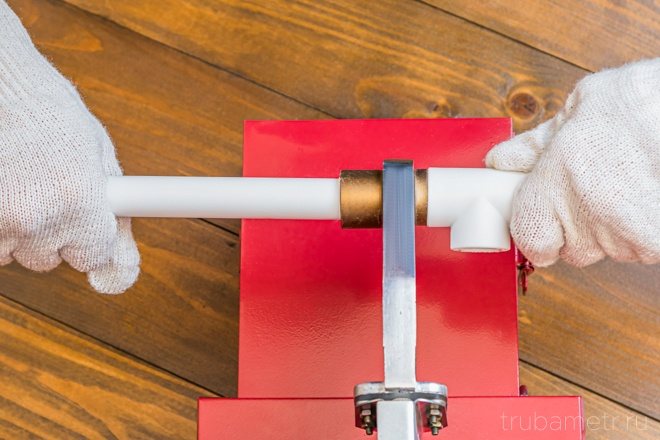

Heating elements


Connection and fixation
It is necessary to hold the abutting parts motionlessly without twisting until the material cools down. It is allowed to correct their alignment within 1-2 seconds. Other movements will lead to disruption of molecular bonds, which often causes leaks during the operation of systems.
Before performing this operation, you must first draw a line on the pipe section, indicating the depth to which it will be inserted into the fitting until it stops. The indicated distance also allows you to heat only the required area with a soldering iron. A different value is used for each pipe diameter.
Soldering table for polypropylene pipes
If you do not withstand the heating time, it will not work well to solder the connection. Underheating prevents diffusion of the material. Overheating will cause deformation of products. Therefore, you should always use the values from the table.
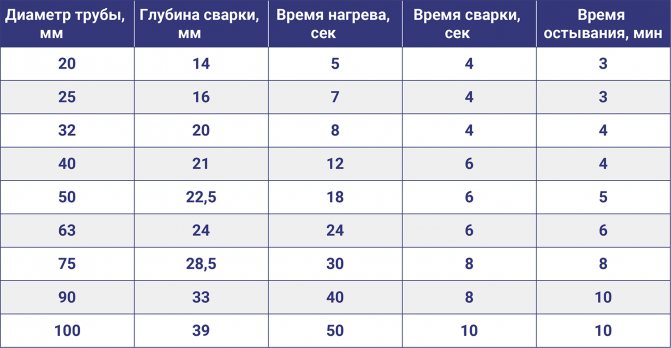

Soldering time for polypropylene pipes table
During soldering of thin-walled pipe products, the heating time of these elements is reduced by 2 times, but the heating period of the couplings cannot be changed. It should correspond to the recommended values. When working outdoors or in an unheated room, where the temperature is less than + 5 ° C, it is necessary to heat the PP product by 50% longer.
If the heating time, removal from the soldering iron and connection of parts, their fixation and the welding temperature of polypropylene pipes are observed, a neatly shaped bead is formed around the circumference inside the joint. Its height is usually 1 mm. It does not interfere with the movement of the liquid. A neat collar is also created outside. It does not spoil the look of the junction.
Brazing pipes with reinforcement
Let's consider how to properly solder reinforced polypropylene pipes. Removal of the protective material is mandatory here. The presence of a reinforced layer (aluminum foil) in the pipe structure requires additional heating. But that's not the point.
Typically, these products have an oversized diameter and do not fit standard soldering iron tips. They need to be cleaned before the soldering process. The exception is fiberglass-reinforced pipes. They are soldered in a standard way.
Given the variety of technologies for reinforcing polypropylene pipes, various processing methods are used before brazing. Traditionally, a sever is used for stripping.
This name has a special device in the form of a metal sleeve with knives. The Schweier is put on the end part of the pipe to be brazed, and the reinforced layer is scraped off with rotary movements around the pipe axis to clean plastic.
If the reinforced layer is located in the middle part of the wall of the plastic pipe, here it is more reasonable to use another tool for processing - a plastic pipe trimmer.
The device differs little from the sever, except for the placement and design of the cutting elements. After processing with a facing tool, the end part of the pipe is aligned along the end, plus a part of the reinforced layer is cut to a depth of 2 mm along the entire circumference. This processing allows soldering to be performed without defects.
Impact of errors on welding quality
Slow, carefully considered actions are a guarantee against mistakes that can nullify all the work. All the little things of soldering technology should be taken into account and not one step away from them.
Common mistakes that result in defective nodes of the installed propylene water supply network:
- The pipe surface has not been cleaned from the grease film.
- The cut angle of the mating parts differs from the value of 90º.
- Loose fit of pipe end into fitting.
- Insufficient or overestimated heating of the parts to be soldered.
- Incomplete removal of the reinforced layer from the pipe.
- Correction of the position of parts after the polymer has set.
Sometimes on high quality materials, excessive heating does not give visible external defects. However, internal deformation is noted when molten polypropylene closes the internal pipe passage. In the future, such a unit loses its performance - it quickly clogs up and blocks the flow of water.
If the cut angle of the end parts differs from 90º, at the moment of joining the parts, the ends of the pipes lie in a beveled plane. A misalignment of parts is formed, which becomes noticeable when a line several meters long has already been mounted. Often, for this reason, you have to redo the entire assembly again. Especially if pipes are laid in grooves.
Poor degreasing of mating surfaces contributes to the formation of "rejection islands". At such points, polyfusion welding does not occur at all or only partially. For a while, pipes with a similar defect work, but at any moment a gust may form. Errors associated with a loose fit of the pipe inside the fitting are also common.
A similar result is shown for joints made with incomplete cleaning of the reinforcing layer. As a rule, a pipe with reinforcement is installed on high pressure lines. Residual aluminum foil creates a non-contact area in the soldering area. This area often becomes a channel through which water is squeezed out.
A gross mistake is an attempt to correct the elements to be soldered with scrolling around the axis relative to each other. Such actions drastically reduce the effect of polyfusion welding. Nevertheless, at some points a seam is formed, and a so-called "tack" is obtained. With a small breaking force, the "tack" holds the connection. However, as soon as you put the connection under pressure, the spike will immediately fall apart.
Conclusions and useful video on the topic
Professionals always have a lot to learn. How to work with polypropylene can be seen in the following video:
Installing polymer pipelines by hot soldering is a convenient and popular technique. It is successfully used in the installation of communications, including at the household level. Moreover, people without experience can use this welding method. The main thing is to understand the technology correctly and ensure its exact implementation. And technological equipment can be bought inexpensively or rented.
sovet-ingenera.com
Soldering tool for polypropylene pipes
To work requires:
- Roulette and pencil (marker) for marking parts, level - to control the structure as a whole.
- Pipe scissors and a trimming tool for the edges of welded parts with the common name "stripping". Stripping differs in purpose and type: there are shavers (edge cleaning, chamfering) and facers (cuts the reinforcement to the soldering depth) in cylindrical bodies, there is a tool with drill bits for cleaning the pipe edge.
- Soldering iron for polypropylene pipes.
- PPE: thick gloves or gloves.
In addition, you will need a general construction tool for installing pipe clamps on the walls: a puncher, a hammer, a screwdriver.
How to choose a soldering iron for polypropylene pipes and other tools
- For a small amount of work (DIY repair), you can buy the cheapest soldering irons - they are quite enough for 2 ... 3 solders. It is better to take high-quality teflon pads for heating parts.
- For professional use, a cheap model will not work. For large amounts of soldering, only a professional welding machine with a large set of high-quality pads is required.
- Scissors. Professional scissors provide an almost straight, perpendicular cut, but are expensive. It is better to purchase them for pipes with a diameter of 40 mm, the soldering of which requires maximum compliance with the dimensions and quality in general.Simple inexpensive scissors almost never give an ideal plane - when using them, the pipe is cut at an angle of 10 ° ... 15 ° relative to the ideal cut. For small diameters, this is not scary: pipes with a small diameter and a thin wall warm up well enough, the deflection does not affect the soldering.
- Stripping tool. A professional plumber must have it. A home craftsman who solders plastic pipes up to a maximum of 25 mm in diameter can do without it.
We make a welding device with our own hands
Good soldering irons cost from a thousand to several thousand rubles, but if you need to do quite a bit of work and have an idea to save money, you can improvise and create a soldering iron with your own hands.
What we need:
- A simple old iron.
- Desired attachment size.
- Thermal paste.
- Temperature sensor.
- The nozzle is screwed to the iron, the ends should be treated with thermal paste.
- Think and think about: how and from which side it will be better to work. Attach the attachment before starting work. At high temperatures, this process will be difficult or impossible at home.
- If it is difficult to work against the wall, then you can saw off part of the sharp tip of the iron.
- Before starting work, you need to warm up the iron for a couple of minutes.
- Watch for the correct temperature. It should be two hundred sixty - two hundred seventy degrees Celsius. The measuring device will help you with this.
Installation of polypropylene pipes
Before installing the pipeline, mark the places of its attachment, install the clamps - this operation is performed before soldering the polypropylene pipes.
Prepare the parts to be brazed:
- The pipe is always cut with a margin for brazing zones (see table) for a specific section. Parts are never cut all at once. In the course of work, measurement error always accumulates. If you respect the dimensions, you will not deviate much from the planned dimensions, but you can accumulate 1 ... 2 extra centimeters (both negatively and positively). It is advisable to make a margin in case of local deviations: during soldering, the configuration of the system can change, which changes the dimensions of the structure to be soldered.
- The prepared parts are cleaned.
- Marks are applied to the parts: they mark the depth of the solder on the pipe (how far the pipe will enter the fitting) and the axis of the connection - horizontal marks on both elements, which should coincide during installation. Always mark the parts - this greatly simplifies the work, especially when installing complex structures with many turns.
How to solder polypropylene pipes:
- Put on your mittens.
- Both connection elements are simultaneously installed on a heated soldering iron and heated up for a certain time.
- After warming up, the parts are removed from the pads and connected by marks, inserting one into the other. After removing the heated parts from the soldering iron for connection and fixation, you have 1-2 seconds. Work confidently and carefully so as not to burn yourself (see item 1).
- Next, it is necessary to maintain the connection until it hardens (time - see table).
- Further soldering with the newly welded area is possible after the unit has cooled down. If you do not withstand the cooling time, then the deformation of the previously soldered parts is possible.
Table 1. Time of heating, holding and cooling of polypropylene pipes and fittings.
| Outside pipe diameter, mm | 16 | 20 | 25 | 32 | 40 | 50 | 63 | 75 | 90 | 110 |
| Solder zone: distance from the edge of the part (solder pad) to the mark, mm. | 13 | 14 | 15 | 16,5 | 18 | 20 | 24 | 26 | 29 | 32,5 |
| Parts heating time, s | 5 | 6 | 7 | 8 | 12 | 18 | 24 | 30 | 40 | 50 |
| Connection holding time, s | 4 | 4 | 4 | 6 | 6 | 6 | 8 | 8 | 8 | 10 |
| Cooling time (for soldering adjacent joints), min. | 2 | 2 | 2 | 4 | 4 | 4 | 6 | 6 | 8 | 8 |
IMPORTANT! The timing data for different materials may vary depending on the purity of the pipe material, the presence of reinforcement and other aspects, up to the room temperature. But these deviations are clearly visible only on pipes of large diameter. For small dimensions, the time will differ by a maximum of 1 ... 1.5 s.If something doesn't work out for you or you are doing it for the first time, then you can buy some of the simplest fittings (couplings), cut some pipes (several pieces of 7 ... 10 cm) and check how the material reacts to heating and connection.
DIY welding of polypropylene pipes for beginners
How polypropylene welding is created - an even seam
Qualitatively and neatly installed pipes in the house are the key to your peace of mind for many years, since bad requirements create a lot of trouble not only for those living in the apartment, but also for all neighbors.
In order to save your own budget, on frequent repairs and replacement of pipes, as well as to preserve your apartment for a long time, and not to spoil relations with neighbors, it is recommended to carefully consider the selection and installation of high-quality pipes. For the installation of heating, sewerage and water supply systems, pipes made of polypropylene are very often used.
It is not without reason that polypropylene pipes have gained popularity. These pipes are very durable, they are not afraid of corrosion, they do not require a lot of time and effort during installation, and there is no need to use complex equipment. Some people think that plastic welding is a difficult process, but it is not.
But in fact, it is not necessary to be a professional, it is enough to read the instructions, as well as be attentive and accurate.
High-quality welding of polypropylene pipes
To make high-quality seams, which are the key to the strength of the entire pipeline system, it is necessary to correctly select the details. Polypropylene pipes can be used for different purposes and are made of available material:
- PPH. They are used to create ventilation, industrial pipelines, as well as to provide cold water supply. They are made of homopolypropylene.
- PPS. Flame retardant pipes. They are able to withstand temperatures of ninety-five degrees.
- РРВ. These pipes are good for providing cold water, as well as for creating a heating system. They are made from polypropylene block copolymer.
- Reinforced parts. Such parts are made from many layers. They are used to reduce thermal elongation in pipes.
The main task is to select the correct parts for each type of pipes, and you also need not to make a mistake with the choice of the correct coupling and fitting.
In order for polypropylene welding to be performed efficiently, a manual welding machine is needed. An industrial model of a welding machine may be needed only for large pipes. You also need to stock up on special scissors with which you can cut pipes.
If you plan to use reinforced parts, then you need to prepare a device for cleaning them. Most often, everything you need is sold in a set with a welding machine. Manual welding machine models differ depending on the equipment.
The kit, complete with the minimum number of parts, will be suitable for work with pipes of the same or diameters. The average configuration includes several attachments of various diameters. And you can also purchase an apparatus fully equipped with all nozzles and tools that may be needed during the welding process.
In order for this welding to be carried out according to the rules, they must first be heated with Teflon nozzles, which are inserted into the welding machine. To do this, the welding machine is installed on the legs, then you need to select and fix the nozzles of the required size, after which you need to select the desired temperature (it should be indicated in the instructions attached to the tool).
Then, you need to turn on the device and wait until the device warms up. When the device has warmed up, we combine the fitting and mandrel, pipe and sleeve.When the welding nozzle is aligned with the pipe, the top layer of the nozzle melts, and the inner layer does not melt, but heats up and becomes plastic, which allows the pipe to be inserted into the nozzle. By the same principle, the mandrel and the fitting are combined.
After the elements have heated up, we remove them from the nozzles with quick precise movements, then we combine the hot parts by inserting one into the other. It is important not to twist or squeeze the parts too much to prevent damage. The melted parts do not retain the temperature for long, and remain plastic until they cool completely, therefore, in order to avoid deformation, they must be tightly fixed and held until they lose their plasticity. The elements become durable after their temperature has cooled below forty degrees. It is then that the decoration and damage become not scary, and you can begin to clean the seams.
Welding polypropylene pipes instruction
If this welding is carried out by you personally and for the first time, then first, purchase extra parts and pieces of pipe to practice. Having mastered the welding skill, you will be able to complete the final work more accurately and efficiently. Also, having spare parts on hand, you will be insured against having to run to the store if something goes wrong during the welding process.
As you can see, in order to weld polypropylene pipes, it is not necessary to use the services of a specialist. This is a very easy, not time-consuming process that anyone can master. Any professional who was once a beginner, and in the matter of high-quality and accurate welding of polypropylene pipes, it is easy to move from a person who has no idea how to do this to a real specialist. Do not be afraid, strictly follow the instructions, connect your attentiveness and accuracy, and you will succeed!
Similar articles
aquarem.ru
Unfinished and soldered
Re-melt occurs when parts are overexposed on the heating pads. As a result, we get:
- Reducing the inner diameter of the pipe.
- Joint deformation during cooling, pipe deviation from horizontal or vertical.
- When you try to fix the connection with your hands, the parts can scroll (they are very hot, they cool for a long time, they do not solder), and as a result, the soldering can turn out to be of poor quality - leakage.
Underheating occurs when parts are underheated. The results of underdosing are also negative:
- Parts are not included in the connection.
- Reheating can lead to unwanted deformations of parts, which can lead to leaks.
- With a slight undershoot, the worst situation arises: the parts enter the joint, but without creating a sealed joint. With such undershoot, the pipe enters the fitting, but not smoothly, without slipping, with a slight interference.
Connecting pipes in hard-to-reach places and welding complex structures
Such structures include:
- installation of counters;
- connection to the water heater;
- distribution to neighboring adjacent consumers;
- soldering in confined spaces.
More details:
- When soldering pipes to the meter, take into account its dimensions: the apartment water meter is larger in size than the pipe. If you first accept the pipes, then it will be difficult to install the device itself - it will not have enough space.
- Water heaters have complex piping. In the conditions of small apartments, you must be careful when calculating pipes. Always mark for yourself the areas where you will not be able to use the soldering iron - here you will have to solder the connections "on the floor", and then adjust them along the wall and the device.
- Nearby devices create a lot of problems: the soldering is delayed in time, since the piling up of pipes interferes with the process, the waiting time for cooling the soldered joints increases. You must clearly think about the sequence in which you will connect all the parts so that they do not interfere after soldering adjacent elements.
- Soldering in cramped conditions takes more time to figure out how to get to the joint than the welding process itself. Therefore, even if you need to solder 2 ... 3 nodes, carefully consider all the options. It is desirable to have an assistant who will feed or pick up the soldering iron.
- Soldering in grooves. At the soldering points, the strobe should be widened and deepened so that you can insert a soldering iron into it. The strobe in adjacent bends and joints should also be wider so that the pipe has a power reserve when removed from the soldering iron.
Interesting: what is the difference between pipe welding and brazing
In the essence of the process, these operations do not differ: the parts to be joined are heated to a state where they can be glued together and obtain a sealed connection. A soldering iron is often called a welding machine - this is also correct. But the concept of "welding of polypropylene pipes" is used more for industrial brazing of large-diameter pipelines in public utilities (butt welding).
Large soldering machines have a slightly different structure. The work takes place as follows:
- The pipes to be welded are placed in a centering device (guide), protected by a special disc, which ensures the flatness and parallelism of the edges to be cleaned. After the disc is removed, the contact area is checked - the pipes should fit perfectly.
- A heating disk is inserted between the pipes, parts of the pipeline are attached to it and heated up.
- The heating element is removed, the pipes are brought one to one and welded joint to joint.
- After the joint has cooled down (exposure is required), the guide structure is removed.
stroikadialog.ru
Cutting pipes
The workpiece cutting process is carried out with a special tool. Although at home, the cutting stage is often performed with a hacksaw for metal, a grinder or an electric jigsaw. With this method of cutting, the surface is obtained with large burrs, therefore, before welding the polypropylene pipes, the edges must be carefully cleaned.


It is better for novice installers to cut pipes with special scissors:
- The precision type model is very convenient to operate. Has a serrated blade and a special ratchet. Scissors allow you to get a high-quality and even cut. But if you need to work with a large number of workpieces, your hand can quickly get tired.
- An even better cut quality can be achieved by using a roller model. Cutting technology is carried out by a guide roller that rotates around the pipe. Low cutting speed is considered a negative property.
- Cordless models combine all the advantages - quality and cutting speed. They are equipped with a small electric motor and can be used for large amounts of work.
Large-diameter workpieces are cut with special pipe cutters to obtain a high-quality and clean cut.

